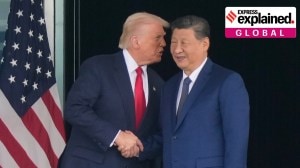Tragedy as marker of change
The Samjhauta Express blasts should prod India and Pakistan into strengthening the peace process

Three ‘I’s are regarded as the founts of terrorism: ideology, infrastructure and state ineptitude. Of these the first ‘I’ of ideology is regarded as fundamental to its spread. Kashmir is the leitmotif for terrorism in the subcontinent, which is supplanted by related factors of disunity. The turn of events after the Samjhauta Express tragedy in Panipat, viewed against the backdrop of Mumbai and Malegaon indicates that this raison d’etre for waging war by a thousand cuts against the Indian state has perceptibly evaporated. The creation of a Hindu-Muslim divide was the aim of the Mumbai/Malegaon perpetrators. They miserably failed to achieve this. The virulent rhetoric that followed these attacks, as well as violent disagreement to the Havana proposal for a joint Indo-Pakistan counter-terrorism mechanism perhaps created a perception among the ideologues of the Jamaat-ud-Dawa — one of the main perpetrators of violence against India — that subverting the peace process could be a useful alternative. However, by staying away from mutual recriminations and continuing with the peace process, the
Panipat tragedy has been deftly converted into a strategic opportunity.
Terrorism has consistently ‘derailed’ the peace process in the past. The Samjhauta Express has been a beacon of detente in Indo-Pakistan amity. Unlike many Indian trains it does not run to its full capacity, yet it is an extremely popular mode of travel for common people. The target was thus carefully selected to create ripples of discontent on both sides of the border. Fortunately this was assiduously avoided.
Havana seems to have marked a new phase. Apart from a few acrimonious voices, the Pakistani hierarchy is demonstrating greater keenness to resolve Kashmir on mutually agreeable terms. By targeting the Samjhauta Express, the strategic message sent out by militants to both Pervez Musharraf and Manmohan Singh is that a compromise not on their terms would not be acceptable. By firmly spurning the call for recrimination, the first ‘I’ of ideology has been reasonably suborned.
The same, however, cannot be said of the infrastructure for terror which now spans both sides of the border. Having committed itself to the peace process, Pakistan now needs to dismantle the terror infrastructure. This will be a tall order, given the political and structural weaknesses which prevent the government from a sustained crackdown on terrorist organisations, funding and support structures such as training camps.
The third ‘I’, of ineptitude, is also unlikely to go away soon. Greater vigilance and coordination between the railway authorities, local police and railway police — which was expected to be a norm after the persistent targeting of trains — has not been forthcoming. The primary responsibility for this should be that of the Indian Railways — and the proposals put forward in the Rail Budget could be the first step.
There appears, for the first time, a convergence of interests between India and Pakistan to nip the roots of terrorism by joint, rather than divergent, actions. The Samjhauta Express tragedy provides both countries with a strategic opportunity to strengthen the peace process.



- 01
- 02
- 03
- 04
- 05




























